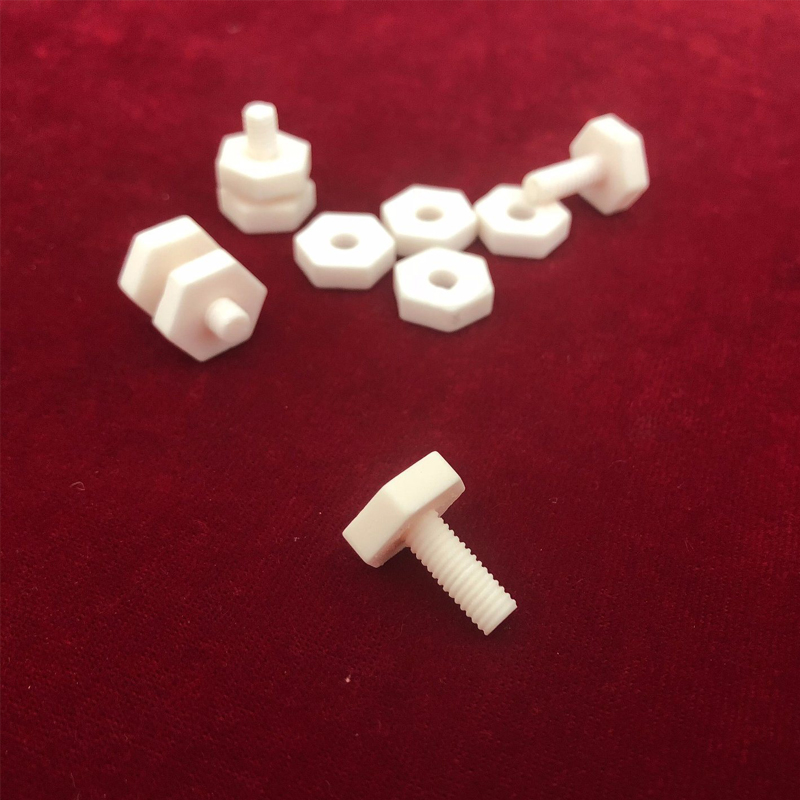Ceramic Bolts: A High-Performance Fastening Solution That Breaks Through Metal Limitations
The Emergence of Ceramic Bolt Products: A Result of Material Innovation Driven by Special Working Condition Demands in the Current Market
The advent of ceramic bolt products is a consequence of material innovation driven by the demands of numerous special working conditions in the current market. Specifically, in 99% of ordinary working scenarios (such as those involving automobiles, construction, and furniture), metal fasteners remain the unshakable first choice due to their advantages in comprehensive performance, reliability, and cost-effectiveness. However, in the remaining 1% of extreme or special working conditions (including semiconductor equipment, high-temperature furnaces, chemical pumps, aerospace vehicles, and medical devices), metal materials are no longer competent. It is at this point that the value of ceramic bolts becomes prominent, serving as a key solution to specific technical challenges.
Common ceramic bolt materials
Alumina Bolts: The Most Economical Ceramic Fastening Solution
Alumina bolts represent the most economical ceramic fastening solution. When an application scenario primarily requires electrical insulation, corrosion resistance, or non-magnetism, but has non-extreme requirements for mechanical strength and thermal shock resistance, alumina is a fully sufficient option with the highest cost-effectiveness. Ceramic bolts made of this material are the most commonly produced; as the most basic and mature type of engineering ceramics, they serve as entry-level industrial ceramic bolts in the market and have a relatively high demand.
Zirconia Bolts
The core advantage of zirconia bolts lies in their excellent toughness and crack resistance—compared to other ceramic materials, they are much less prone to brittle fracture. Meanwhile, they boast outstanding wear resistance and surface finish, enabling them to maintain stable dimensions and an aesthetic appearance in environments involving long-term stress or friction. In scenarios that require withstanding a certain degree of impact or stress, along with high demands for dimensional accuracy and aesthetics (such as applications in the medical device and semiconductor industries), their comprehensive performance makes them a critical fastening material for these high-end applications.
Silicon Nitride Bolts
Silicon nitride is the ceramic bolt material with the best comprehensive mechanical properties and thermal shock resistance. In scenarios requiring high strength, high toughness, and resistance to high-temperature shock, it is almost the only option. The technical threshold for silicon nitride powder preparation and sintering is relatively high; the number of enterprises capable of stably producing high-quality silicon nitride structural components is far fewer than those producing alumina and zirconia components, and such production is generally specialized. Products of this type usually need to be customized in advance, with few off-the-shelf options available, and they are expensive. However, silicon nitride bolts are star products for high-temperature and high-strength working conditions.
Silicon carbide presents high sintering difficulty (reaction sintering or hot-pressing sintering is often required) and poor machinability (diamond grinding is almost the only applicable method). These factors collectively result in its production cost being higher than that of other ceramic materials. It is usually produced on an order basis to address specific and extreme working conditions, and is suitable for extreme environments where all other materials (including other ceramics) are incompetent.
Ceramic bolts are currently mainly distributed in high-end manufacturing and research equipment fields, with common applications including
(1) Semiconductor equipment
(2) High temperature furnace and heat treatment equipment
(3) Chemical Industry and Corrosive Environment
(4) Electronic and Magnetron Systems
(5) Aerospace and New Energy
(6) Medical devices and research equipment


